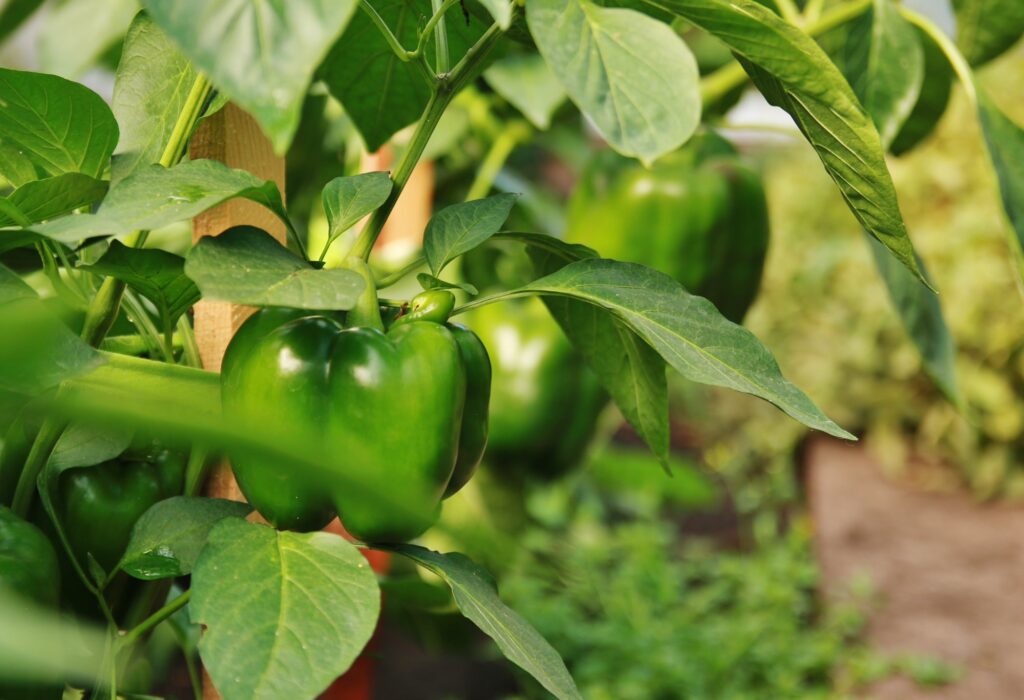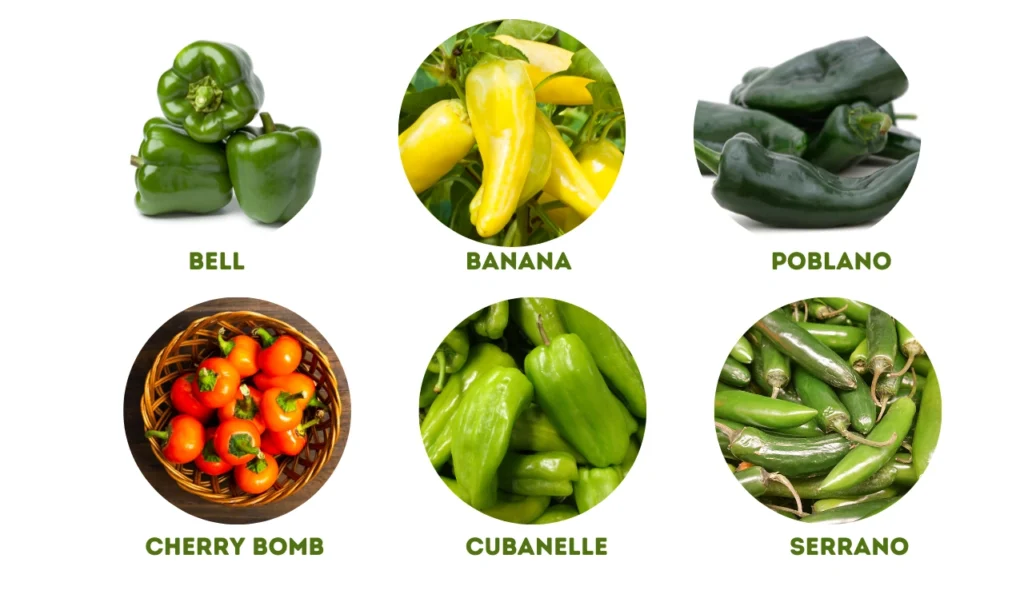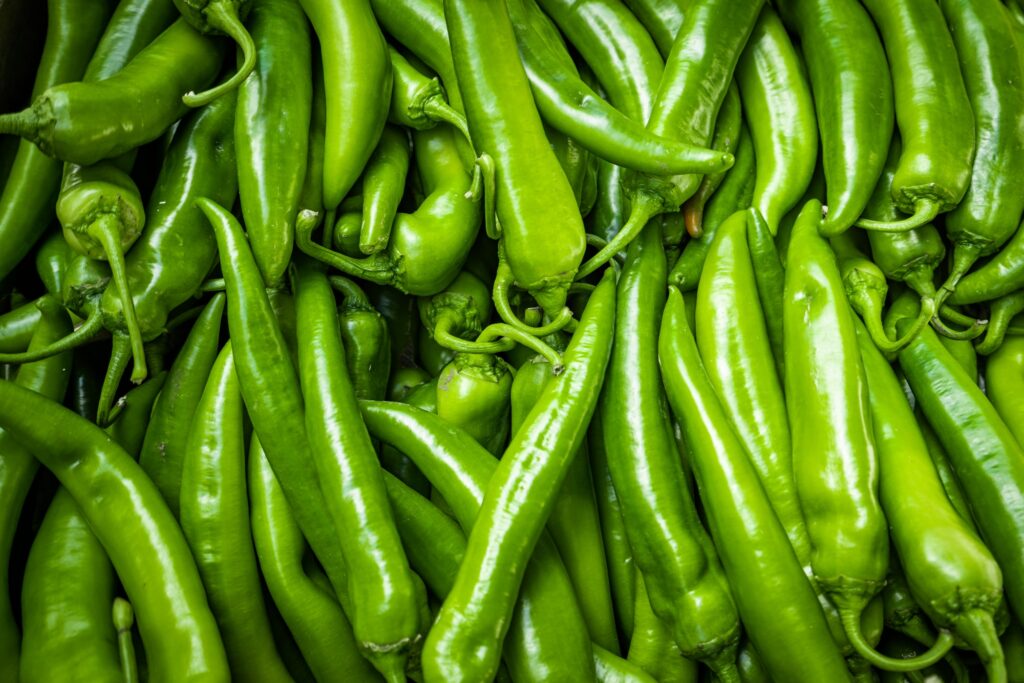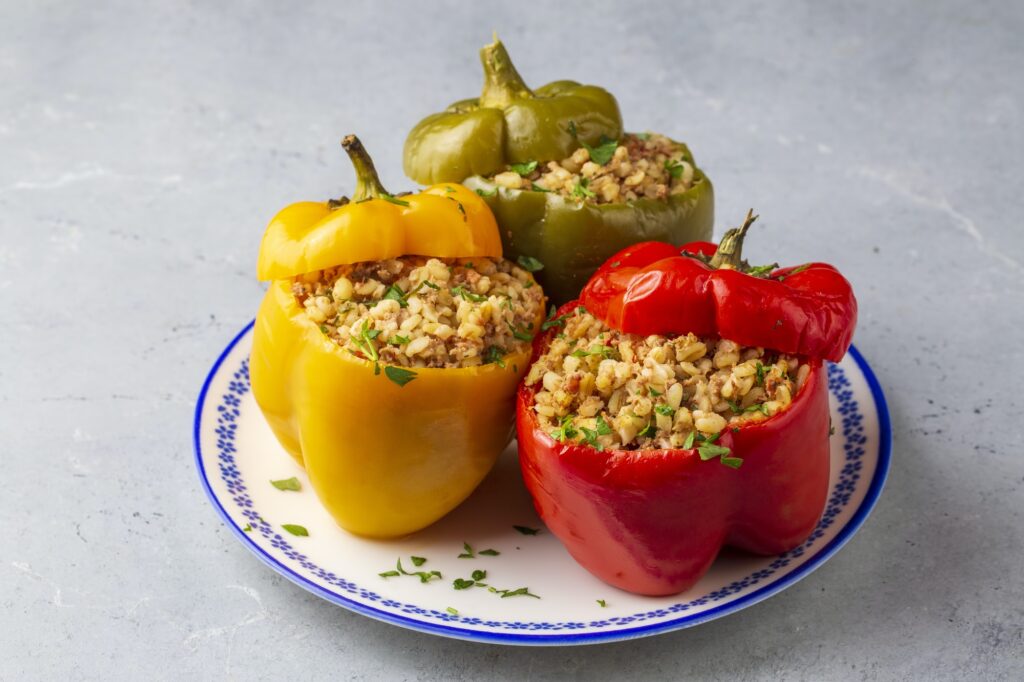Guide to Green Peppers: Nutrition, Health Benefits, Uses, and More

Green peppers are much more than just a tasty veggie to add color to meals. These nutritious fruits (yes, fruits!) offer an impressive array of vitamins, minerals, antioxidants, and other beneficial plant compounds.
Discover everything you need to know about green peppers in this comprehensive guide. You’ll uncover fascinating facts on their origin, cultivation, nutritional content, health impacts, culinary uses, recipe ideas, and more.
After reading this guide, you’ll gain a whole new appreciation for the vibrant green pepper!
A Brief History of the Green Pepper

While they seem commonplace today, green peppers were once an exotic foreign import. Here’s a quick look at the origin and spread in popularity of the green pepper over history:
- Origin: Green peppers first grew wild in Central and South America over 6,000 years ago. Some of the earliest cultivated peppers occurred in this region.
- Europe: Christopher Columbus introduced pepper seeds to Spain in the 15th century after exploring the Americas.
- Global Spread: Over the next centuries, Spanish and Portuguese explorers facilitated the spread of peppers to Europe, Asia, the Middle East, and Africa.
- Peak Popularity: Today, green peppers are popular around the world. China, Mexico, Turkey, and the United States now lead global production.
So the next time you bite into a green pepper, appreciate just how far it’s journeyed through history!
Green Pepper or Fruit? Unpacking the Botanical Science
You may be surprised to learn that green peppers fall into the botanical category of fruit, not vegetables1.
That’s because they grow from flowering pepper plants in the Capsicum annuum species and contain dozens of small seeds. These are defining characteristics of fruits.
However, the green pepper’s savory taste and culinary usage as a veggie makes this classification quite confusing! Given how we use them, it’s perfectly fine to call them a vegetable in the kitchen.
This mix-up simply shows that not everything fits neatly into our scientific boxes. So feel free to enjoy green peppers however you prefer – just know there’s a little more science going on with every bite!
A World of Green Pepper Varieties

While the classic green bell pepper might come to mind first, many different cultivars exist:
Bell: The most common. Large, blocky, 3-4 lobed bell-shaped fruit with thick, crisp flesh.
Banana: Long, yellow, plump fruit tapering to a point. Sweet, juicy flesh2.
Poblano: Dark green, heart-shaped pepper with mild heat. Frequently stuffed and baked.
Cherry Bomb: Round, cherry-sized fruit growing in clusters. Crisp texture.
Cubanelle: Long, light green to red peppers. Subtly sweet flavor.
Serrano: Small with intense heat. Favored in salsa and hot sauces.
Within each variety, you’ll also notice differences in size, shape, color, taste, and heat. This wide diversity comes from generations of specialized breeding by farmers globally.
No matter which you choose, integrating a variety of vibrant green peppers keeps meals exciting and nutritious!
Nutrition Facts: The Unique Phytonutrients in Green Peppers
Traditionally prized by folk healers for their medicinal properties, science now backs the impressive nutritional value behind green peppers:
Vitamins
- Excellent source of immune-boosting vitamin C (over 3x your daily needs per cup!)
- High amounts of vision protecting vitamin A
- B-vitamins thiamin, riboflavin, niacin, pyridoxine, and metabolism-regulating vitamin B6
- Heart healthy folate
Minerals
- Potassium – Regulates heart rate and blood pressure
- Magnesium and phosphorus – Support bone density
- Iron, zinc, copper – For red blood cell health
Antioxidants
- Carotenoids: lutein, zeaxanthin (for eye health), beta carotene (vitamin A precursor)
- Flavonoids: quercetin, luteolin (for heart health, immunity)
- Capsaicinoids: Provide anti-inflammatory effects
This impressive mix of micronutrients, paired with low calories per volume, makes the green pepper a nutrient-dense choice anytime.
Unlike some produce, green peppers retain nutrients very well with storage, freezing or cooking. Just avoid boiling to maximize their nutritional value.
The Many Ways Green Peppers Support Your Health

With all those vitamins, minerals, and antioxidants, it’s no surprise that eating more green peppers provides some amazing health benefits:
Boost Your Immune System
Getting enough immune-supporting vitamin C is crucial for defending against pathogens.
Falling short raises infection susceptibility. The high vitamin C in green peppers makes them an ideal food to fend off colds and flu.
They also provide carotenoids, flavonoids, and vitamin A – all protective compounds that enhance immune cell response.
Support Heart Health
Factors like elevated blood lipids, oxidation, inflammation, and high blood pressure damage heart health over time.
The nutrients in green peppers counteract ALL of these:
- The mineral potassium helps control healthy blood pressure
- B-vitamins lower “bad” LDL cholesterol levels
- Anti-inflammatory flavonoids like quercetin prevent plaque buildup
- Antioxidants neutralize dangerous free radicals
Eating more green peppers stacks the odds for better heart health in your favor!
Regulate Blood Sugar Levels
Controlling blood sugar levels – and preventing chronic elevated glucose that can lead to prediabetes – relies heavily upon a diet of low-glycemic vegetables.
Green peppers fit the bill perfectly thanks to their high fiber and low sugar content. Fiber slows digestion, preventing blood sugar spikes. The antioxidants they contain also support healthy blood glucose regulation already within normal levels.
For those looking to manage insulin response, green peppers should become a staple veggie.
Improve Vision Health
Two carotenoids in green peppers – lutein and zeaxanthin – selectively accumulate in eye tissue.
Here they absorb damaging blue light and neutralize free radicals caused by UV exposure. As antioxidants, they protect delicate eye structures.
Getting enough lutein/zeaxanthin via a diet high in green peppers safeguards vision clarity and function while slowing forms of blindness.
Enhance Weight Loss Results
Replacing refined carbs with low-calorie, high-fiber green peppers is an easy way to cut calories and help weight loss.
At the same time, green peppers provide nutrients needed for lipid metabolism (like vitamin B6) without spiking insulin.
And while quite mild, green peppers do still contain trace amounts of metabolism-boosting capsaicin to up caloric burn.
That makes them an ideal addition to any health or weight-conscious diet.
Incorporating More Green Peppers Into Meals

Hopefully learning all these incredible health benefits makes you eager to eat more green peppers! Here are some easy ways to incorporate them into recipes:
- Dice up raw green peppers to give salads a crunchy texture boost
- Slice thinly for snacking with hummus, guacamole, or low-fat dips
- Stuff peppers with whole grains, veggies, and low-fat proteins
- Grill or roast on the barbecue until tender
- Sauté into a stir fry, fajitas, omelets, and egg scrambles
- Purée into gazpacho or green salsa
- Mix into burrito bowls alongside beans, rice, and lean proteins
- Bake into casseroles, lasagnas or egg bakes
- Pickle into a relish to top hot dogs, burgers, and sandwiches
However you choose to enjoy them, adding more green bell peppers elevates dishes with their crisp, grassy bite.
Green Pepper Tips, Tricks, and FAQs
Still have some lingering questions about selecting, storing, and cooking with green peppers? Here are answers to some frequently asked questions:
How do I choose the best green peppers in the grocery store?
Inspect the skin for a smooth, taut surface without wrinkles or soft spots. Size and shape can vary. Choose heavy peppers for the best flesh-to-seed ratio.
Can I store cut green peppers in the refrigerator? How long do they last?
Yes – place sliced green peppers in an airtight container in the fridge for 5 days max.
What’s the best way to freeze green peppers long term?
Blanch peppers for 3-4 minutes until partially softened, then arrange in a single layer on a sheet pan to quickly freeze. Transfer frozen pepper slices to an airtight freezer bag. They’ll last this way for 6-9 months.
Why are some green peppers hotter than others?
Some green peppers contain more of the compound capsaicin which binds to pain receptors, producing a “hot” sensation. Even within the same plant, individual peppers can vary in heat level. Choose milder cultivars if you don’t like spiciness.
Can you eat green peppers raw?
Yes! Raw green peppers make for deliciously crunchy, juicy additions to any salad or veggie platter.
What happens when you cook green peppers?
Applying heat via roasting, grilling, sautéing, or baking green peppers brings out their natural sweetness by softening cell walls and concentrating sugars. Cooking also improves digestibility and nutrient absorption.
What are good spice pairings with green peppers?
The bright, grassy flavor of green peppers pairs well with cumin, garlic, onion, paprika, oregano, cilantro, basil, and parsley.
Conclusion
As you can see, humble green peppers offer so much more than meets the eye! From their fascinating origin story to impressive nutrient lineup to their amazing health benefits, these peppers pack a nutritious punch.
Bringing more colors and variety to your plate always pays off. So embrace green peppers as a tasty, versatile way to boost everything from immunity and heart health to weight loss results and blood sugar regulation.
With this handy guide under your belt, you now have plenty of culinary inspiration to enjoy green peppers along with insights into their science and health benefits. So chop up a batch to sprinkle into your next salad, salsa, stir fry or casserole. Just don’t forget to savor a bite on their own to appreciate that signature bold, grassy flavor!
- The botanical classification: Peppers are fruit, https://www.eufic.org/en/healthy-living/article/is-a-pepper-a-fruit-or-a-vegetable-and-why [↩]
- https://en.wikipedia.org/wiki/Banana_pepper [↩]





